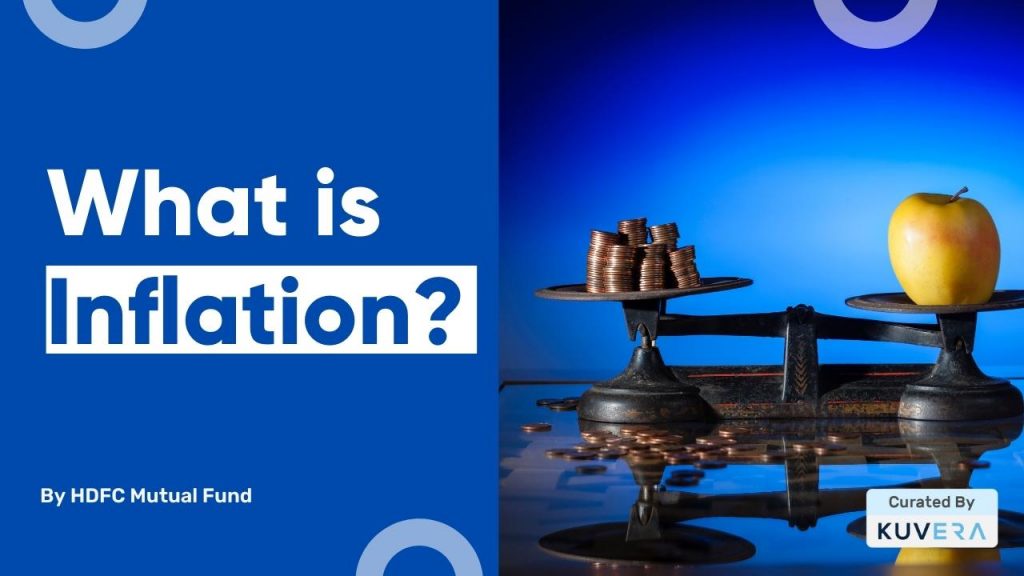Inflation worries every household, mainly the middle and lower class. It is a cause of concern for the government as well, as it not only affects the citizens of a country but directly affects the nation’s growth. So, what exactly is the concept of inflation and inflation rate, and why is it a problematic issue for everyone, including the government? Find out here!
What is Inflation?
Inflation is the increase in the prices of goods and services in the country that directly decreases the purchasing power of money. Inflation is denoted as a percentage change in the overall prices over time.
What Creates Inflation?
There are multiple factors behind inflation. This includes:
- Increase in Demand: The increase in demand directly impacts inflation. If there is more demand and the supply is insufficient to meet such an increase in demand, then the prices of such goods or services are bound to increase.
- Shortage of Supply: If there is a supply shortage, then goods and services will be scarce. In such a case, there will be an increase in the prices of goods and services as there are more consumers for limited supply.
- Government Policies: The government policies also directly impact the country’s inflation. This includes domestic and international policies, bilateral relations with other countries, taxation policies, etc.
Measure Inflation
Each country has its way of measuring inflation in its economy. In India, inflation is calculated based on the Consumer Price Index (CPI). Let’s decode CPI!
Until 2014, India measured inflation based on the Wholesale Price Index (WPI). The Wholesale Price Index considered the prices of a basket of wholesale commodities. Changes in the prices of these commodities depicted inflation or deflation in the economy. However, WPI ignored services and the bottlenecks between the wholesalers and the retailers. Therefore, in 2014, RBI adopted the Consumer Price Index (CPI) to measure inflation in India.
The CPI considers the price change of 260 retail commodities, including specific services. The Ministry of Statistics and Programme Implementation records the prices of sample goods and services regularly and records the findings. The change in the price shows the inflation or deflation in the economy for the relevant period.
Before understanding how to calculate inflation, it is essential to understand how CPI is calculated.
CPI = (Cost of a basket of goods and services in the current year/cost of a basket of goods and services in the base year) * 100
Once you calculate the CPI for two years, the inflation rate can be calculated between those two years. Following is the formula for calculating inflation rate:
Inflation = [(CPIx + 1 – CPIx) / CPIx] * 100
where CPIx is the initial Consumer Price Index
For instance, suppose the price of 1 litre of oil is Rs. 100. After one year, the price of the same 1-litre oil increases to Rs. 105. Therefore, the inflation rate in this case will be (105-100)/100 * 100 = 5%.
Good and Bad in Inflation
People perceive inflation as bad for their pockets. While they are true in the most sense as it leads to an outflow of more money for the same commodity, is there anything good about inflation? As the saying goes, there are pros and cons to everything. Let’s see whether inflation has both pros and cons or is it only cons for the people!
-
Cons of Inflation
Cons of inflation, as most people know, include the following:
- It reduces the purchasing power of money and, consequently, of the people.
- Inflation costs people their savings and investments by the people.
- Hyperinflations have led to the collapse of economies in the past.
- The impact of inflation can be seen on the demand levels in the economy. As inflation rises, goods and services become unaffordable.
-
Pros of inflation
While the cons of inflation are many, let’s understand the pros of inflation that only a few might know:
- Inflation reduces the real value of debt. As inflation increases, it devalues the money, directly reducing the value of debt.
- Inflation is also the result of the demand and supply of money (money inflation). Interestingly, more money means more spending, which increases demand. Increased demand triggers an increase in production and consequently a rise in GDP.
- Continuous deflation can lead to the Paradox of Thrift, where due to constant fall in prices, consumers wait to get a better deal that reduces the spending in the economy.
- Debtors are benefitted as they repay money that is less valuable than the money they owe.
How to Beat Inflation?
One of the main questions that almost everyone asks is how to beat inflation. The answer is straightforward – through investment. To beat inflation, you must invest your funds in avenues that provide higher returns than the inflation rate. In India, as the economy is currently in an inflation period, the inflation rate is around 6% per annum. Kuvera provides a platform where you can compare and analyze various assets and invest in letting your money grow at inflation-beating rates.
Interested in how we think about the markets?
Read more: Zen And The Art Of Investing
Watch/hear on YouTube:
Start investing through a platform that brings goal planning and investing to your fingertips. Visit Kuvera.in to discover Direct Plans and Fixed Deposits and start investing today.
#MutualFundSahiHai #KuveraSabseSahiHai!

